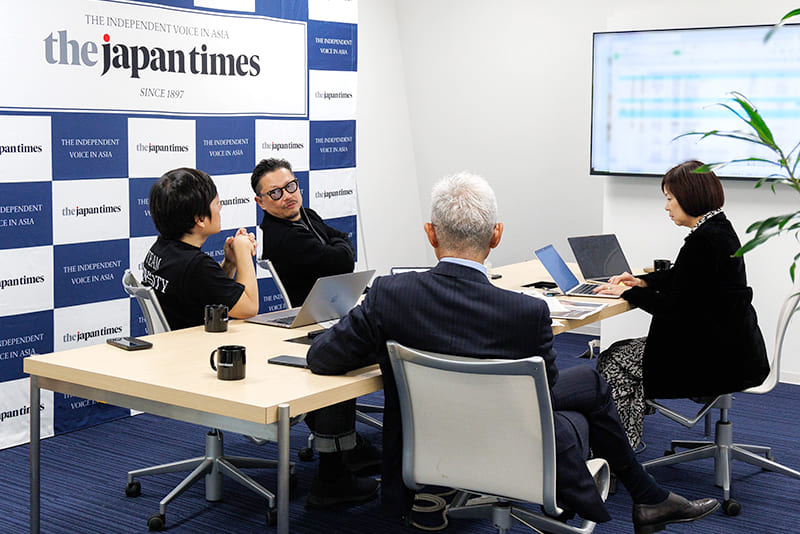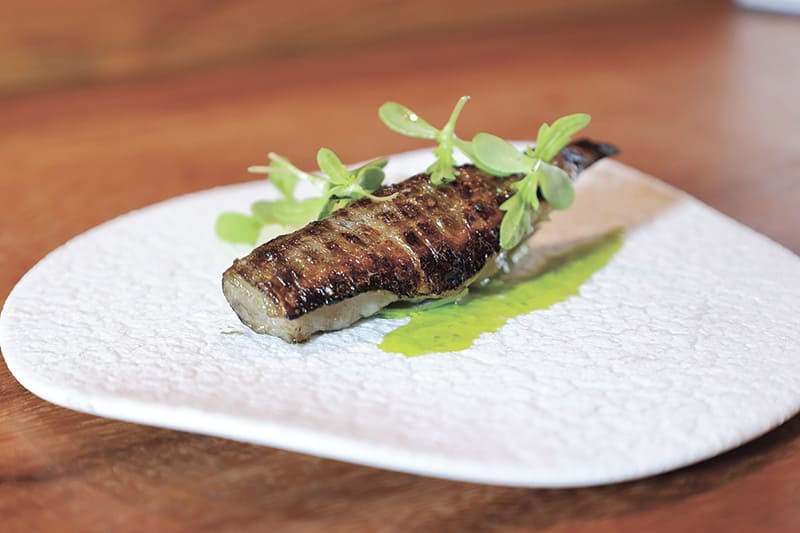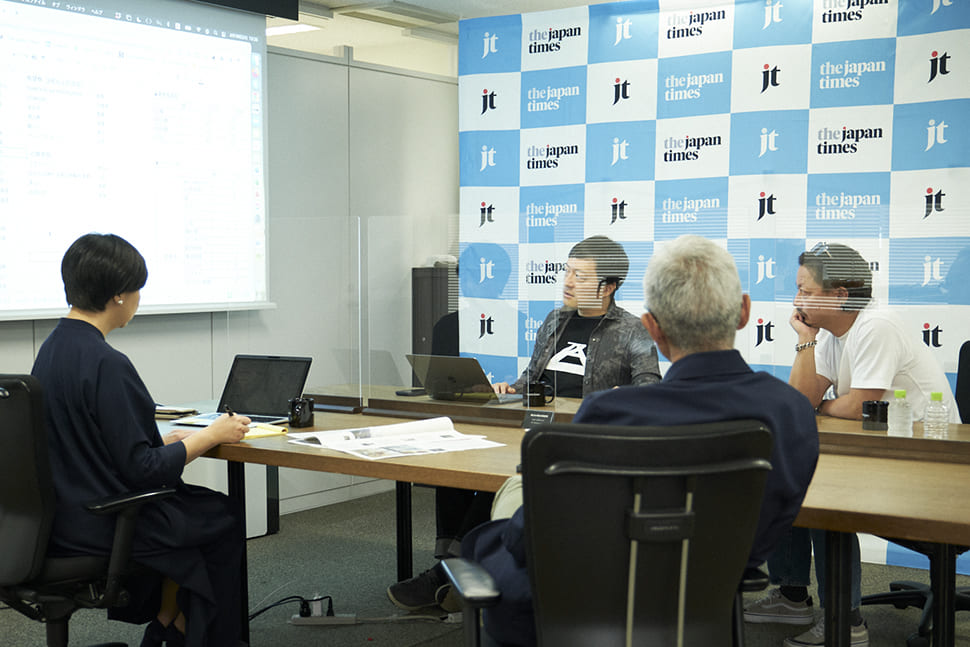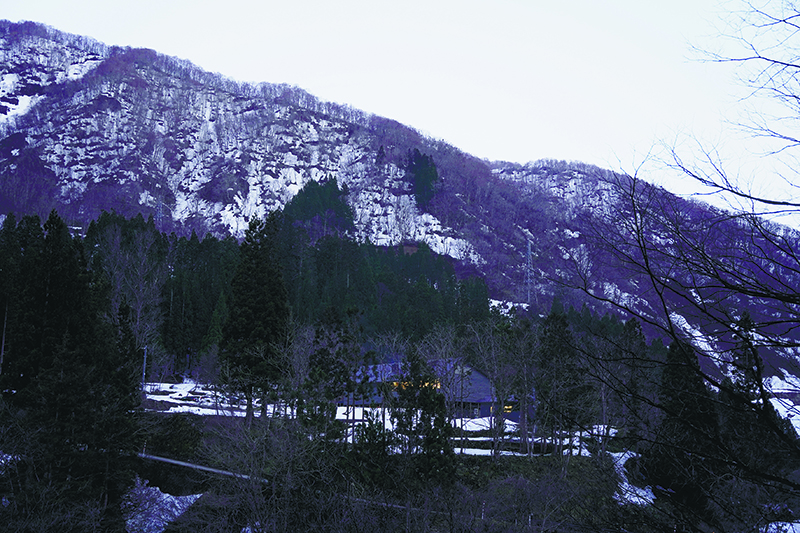January 26, 2024
Tsukumo showcases Nara’s far-flung history
Destination Restaurants 2023
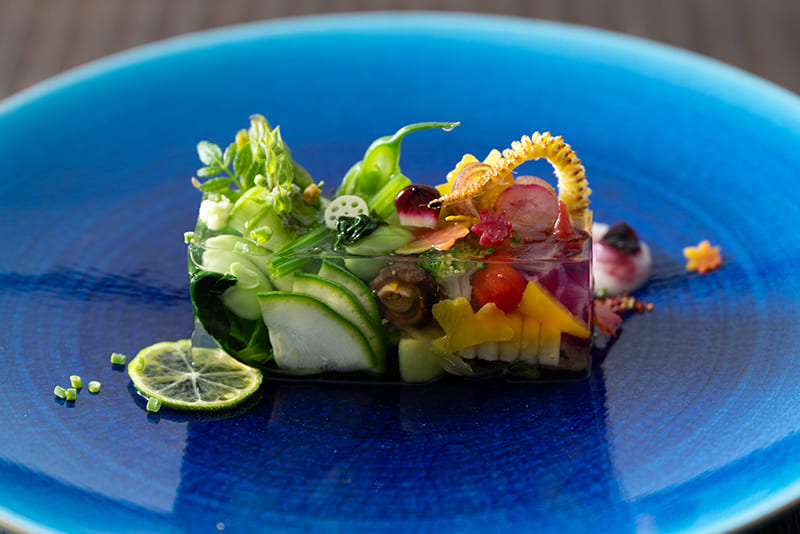
PHOTOS: TAKAO OHTA
Although the Kansai region has many famous restaurants serving Japanese cuisine, mainly in and around Kyoto and Osaka, for a long time nearby Nara Prefecture unfortunately lacked a reputation for fine dining. That started to change about 20 years ago, however, and the past decade has seen an increase in establishments serving world-class dishes. As a result, there has been a gradual decrease in “foodies” who sightsee in Nara but then proceed to Kyoto for dinner and lodging, and a corresponding increase in visitors who spend substantial sums of money in Nara.
A driving force in this trend is the Japanese restaurant Tsukumo, which opened near Nara Station in 2015 and relocated in 2021. Its current site is a 30-minute walk from the station and 25 minutes from Kintetsu Nara Station. While a taxi will take you there in about 10 minutes, a leisurely stroll is recommended, as the area is home to many of the most outstanding sightseeing attractions in Nara — or rather, the entire country — including the World Heritage sites Gangoji and Todaiji temples and Kasuga-taisha Shrine, as well as the Nara National Museum. Nara, the ancient capital and a large metropolis as early as the seventh century — earlier than even Kyoto — is also a delightful walking city with abundant greenery.
Located on a corner of Naramachi-dori, a street lined with traditional houses, some dating back to the Edo Period, Tsukumo is a detached structure brimming with the aesthetic sensibility of chef Masato Nishihara, who has a deep love for traditional Japanese culture. For the relocation and renewal, Nishihara built the house from scratch with a wealth of carefully selected materials — constructing the roof with tiles from an old temple, for example, and paving the walkway partly with large mortar stones. The restaurant, which has seven counter seats, four table seats and one private room, is run by Nishihara together with okami (proprietress) Tomoko Nishihara and a small kitchen staff. The omakase set menu, priced anywhere from ¥25,000 to ¥35,000 ($170 to $240) for both lunch and dinner depending on the ingredients purchased that day, is based on changing monthly themes.
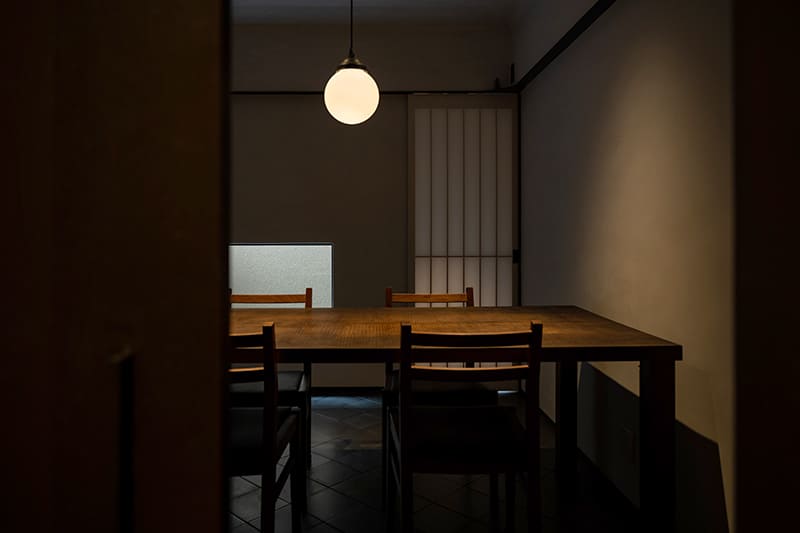
Tsukumo
968, Kidera-cho, Nara-shi, Nara Prefecture
Tel: 0742-22-9707
http://tsukumonara.com
During our visit in November, the themes were “The 75th Exhibition of Shosoin Treasures,” named for a show at the Nara National Museum, and “The 1,300th Anniversary of the Death of O no Yasumaro,” editor of the “Kojiki,” the oldest extant history of Japan. The succession of dishes was not only delicious and visually beautiful, but also richly evocative of Nara’s history. One was chirashi-zushi (seafood and other ingredients on a bed of rice) artfully arranged to resemble the bronze mirror inlaid with mother-of-pearl that was a highlight of the Shosoin exhibition.
Nishihara honed his craft at Japanese restaurants in New York and London as well as Japan, acquiring an international sensibility along the way. “As we can see from the treasures stored in Shosoin,” he said, “Nara is an international city that gathered objects from overseas via the Silk Road since ancient times. I really enjoy creating dishes that combine these elements with the adventure and romance of encounters between ancient and modern. Through my cuisine, I hope to transmit the culture of Nara Prefecture, and all of Japan, to the next generation.”
At many traditional Japanese restaurants — including Kyoto Kitcho Arashiyama, where Nishihara started training the day after high school graduation and worked for a decade — apprentices have learned not only about cuisine and serving vessels, but about Japanese traditional culture as a whole, including the tea ceremony, calligraphy and flower arrangement. With the continuing decline in the number of traditional restaurants, the work of chefs like Nishihara has become especially significant.
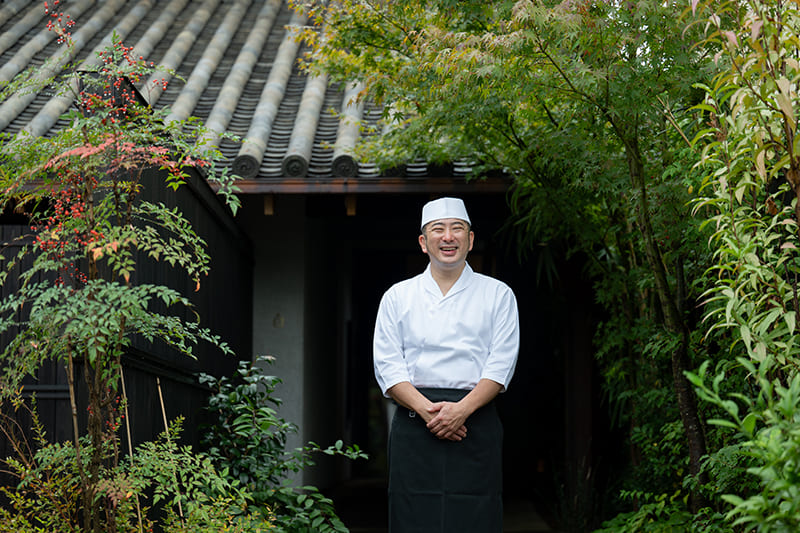
MASATO NISHIHARA
Nishihara was born in Fukuoka in 1977 and raised in Tokyo. After apprenticing for 10 years at Kyoto Kitcho Arashiyama, he worked at Toma, a soba kaiseki restaurant in Karuizawa, and served as the first head chef at Kajitsu in New York, a shōjin ryōri (Buddhist vegetarian cuisine) restaurant managed by the revered old Kyoto restaurant Fuka. Following a stint at the London kaiseki restaurant Umu, in 2015 Nishihara opened Tsukumo in Nara, the hometown of his wife, Tomoko, the restaurant’s proprietress. In 2021, Tsukumo moved to its current Nara location.
奈良県ガストロノミーを牽引する日本料理店。
奈良県で見物をしても、夕食や宿泊は京都でという人も多かったのが、ここ20年間で徐々に減少し、奈良県でお金を落とす観光客が増えてきた。
その立役者の一軒が2015年に誕生した日本料理店『白』である。2021年には近隣に元興寺や春日大社など観光スポットが密集するエリアに、寺社の古材等を用いた一軒家を建てて移転。店主、西原理人が女将、知子や厨房スタッフ数名と切り盛りする。おまかせコース(¥25,000〜)は、月ごとに正倉院展や太安万侶1300年忌など、奈良県にちなんだテーマが設けられ、歴史を感じさせる品々が続く。
『白』では料理、器、建築に至るまで日本文化に造詣が深い西原の美意識が行き届いている。それは西原が10 年間勤め上げた『京都嵐山吉兆本店』をはじめとする多くの料亭が、弟子に茶の湯や書、花など、日本の伝統文化について総合的に学ばせてきた豊かさの産物とも言える。料亭が減少の一途を辿る今、西原のような料理人が果たす意義は大きい。
Return to Sustainable Japan Magazine Vol. 32 article list page



